Published by Dr. Brandon Richland, MD
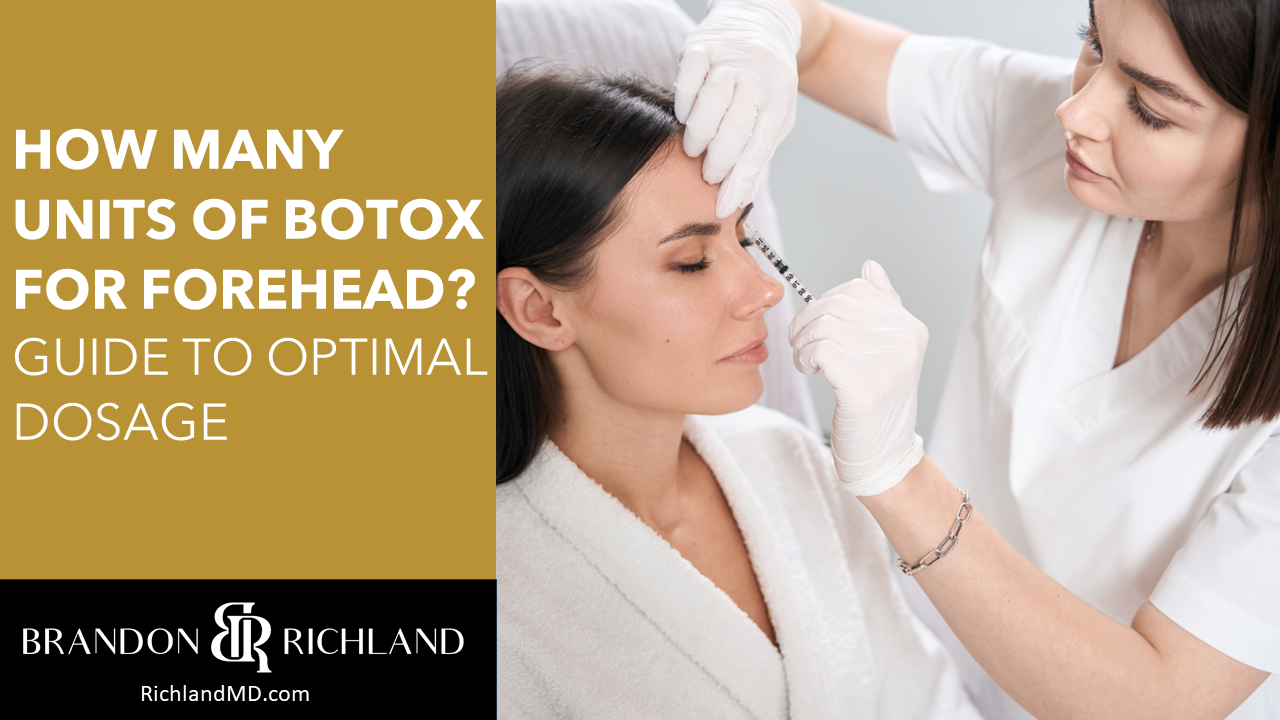
Understanding the precise amount of Botox required for targeting forehead wrinkles is crucial for achieving optimal results. Botox, a neuromodulator injected in small doses, works by relaxing the muscles that contribute to wrinkle formation. The goal with Botox treatment is to reduce the appearance of lines and creases while maintaining a natural look.
The exact dosage needed can vary from person to person based on several factors, including muscle strength, the depth and breadth of the wrinkles, and individual aesthetic goals.
When considering Botox for the forehead, it’s important to consult with a qualified medical professional who can assess personal needs and recommend an appropriate dosage. Often, the treatment is personalized to ensure that the results align with the desired outcome, whether it’s a subtle smoothing or a more pronounced effect.
Key Takeaways of How Many Units of Botox for Forehead
- The necessary Botox dosage for forehead wrinkles varies with individual muscle characteristics and desired aesthetic results.
- A professional consultation is recommended to tailor the Botox treatment to the patient’s unique features for a natural outcome.
- Awareness of treatment effects, potential side effects, and costs is fundamental in the decision-making process for Botox.
Understanding Botox and Its Uses
Botox, or botulinum toxin, has become widely recognized for its ability to diminish the appearance of wrinkles, including those known as crow’s feet and glabellar lines. As a neurotoxic protein, it serves multiple therapeutic and cosmetic functions.
Botox as a Solution for Wrinkles
Botox works by temporarily paralyzing the muscles beneath the skin, making it a precise and targeted approach for addressing signs of aging on the face. When carefully injected into specific areas such as the forehead, it smooths out fine lines and softens the prominent vertical glabellar lines (often called “11” lines) between the eyes, as well as crow’s feet around the corners of the eyes.
Determining Botox Units for the Forehead
When considering Botox treatments for the forehead, the units of Botox can vary. The key to a successful outcome lies in understanding the typical dosage range and the individual factors that influence the number of Botox units required.
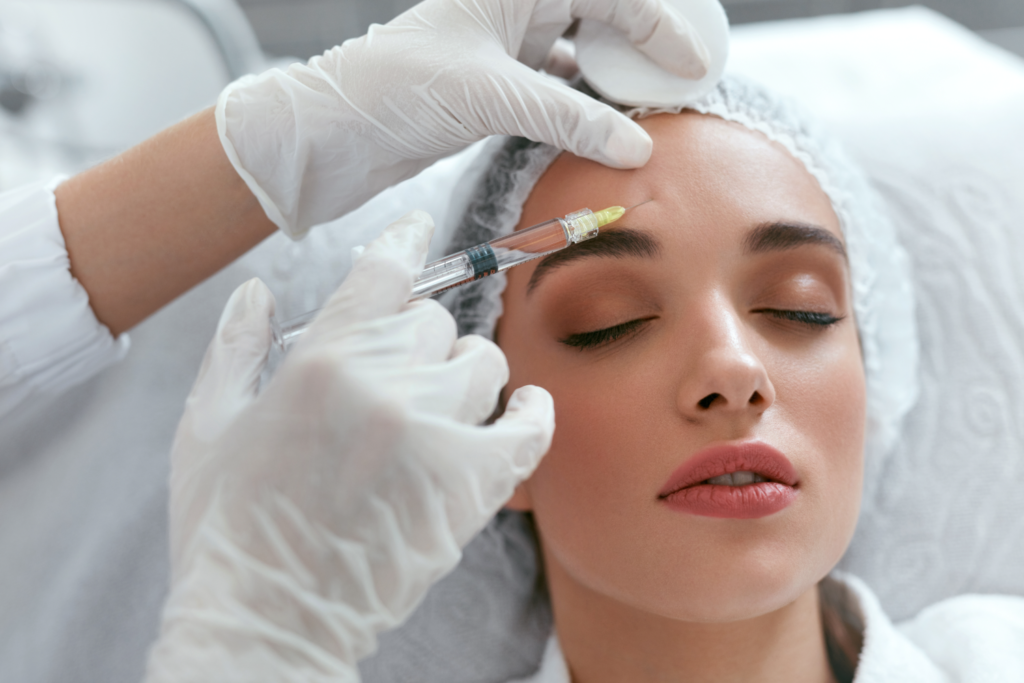
Typical Dosage Range
For horizontal forehead lines, most patients require a dosage that falls between 10 to 30 units of Botox. It’s common for providers to start with a conservative amount, typically 15 to 20 units, to achieve a more natural result. Adjustments may be made in subsequent sessions based on results and muscle response.
Factors Influencing Botox Units
Several individual factors determine the appropriate number of Botox units for a forehead:
- Muscle strength: Stronger forehead muscles may need more Botox units for relaxation.
- Desired effect: Some individuals prefer a completely smooth forehead, while others aim for a more natural look with minimal movement.
- Age: Generally, more mature skin with deeper wrinkles can require a higher dose.
- Gender: Men often have stronger muscles and therefore might need additional units.
Each individual’s anatomy and desired outcomes play a crucial role in deciding the exact number of units. Those seeking treatment should consult with a qualified healthcare professional to discuss their specific needs.
The Botox Injection Procedure
The Botox injection procedure typically begins with an in-depth consultation and is followed by precise injections performed by a trained healthcare provider.
Consultation With a Professional
Before receiving a Botox injection, it is crucial for one to have a thorough consultation with a dermatologist or plastic surgeon.
In this meeting, the healthcare professional will evaluate the individual’s medical history and specific aesthetic goals. They will also discuss the potential outcomes and determine the appropriate amount of Botox units for the desired effect on the forehead.
Injection Technique
The actual injection technique is a critical component of the Botox procedure. The dermatologist or plastic surgeon skillfully administers the Botox using a fine needle, targeting specific muscles in the forehead.
This process might involve several injections to ensure an even distribution of the product and to achieve a natural-looking reduction in lines and wrinkles. These healthcare providers have extensive knowledge of facial anatomy, which is imperative for optimal results and minimizing the risk of side effects.
Botox Results and Longevity
When someone receives Botox injections, they can anticipate a smoothing of forehead lines, thanks to the muscle relaxation effects of Botox. The duration of these effects varies, with many individuals enjoying a more youthful appearance for a considerable period before a touch-up is needed.
Expected Outcomes
After Botox injections to the forehead, one can expect to see a significant reduction in the appearance of wrinkles and fine lines. Botox works by temporarily paralyzing the muscles that contribute to these lines, resulting in a smoother forehead.
The degree of smoothing is largely dependent on the number of units used and the individual’s unique muscular structure. Expressions remain natural but with less pronounced lines. Here’s what is typically observed:
- Diminution of horizontal forehead lines.
- Decrease in frown lines between the eyebrows.
- A subtle eyebrow lift in some cases.
Duration of Effects
The effects of Botox are not permanent; they gradually diminish over time. Typically, patients can expect the duration of Botox’s muscle-relaxing results to last between 3 to 6 months. Several factors affect this timeline, including:
- The patient’s age and skin elasticity.
- The number of units administered.
- The patient’s lifestyle and facial muscle activity.
Patients will notice a gradual return of muscle movement as the Botox wears off, which is an indication that a follow-up treatment may be considered to maintain the desired look.
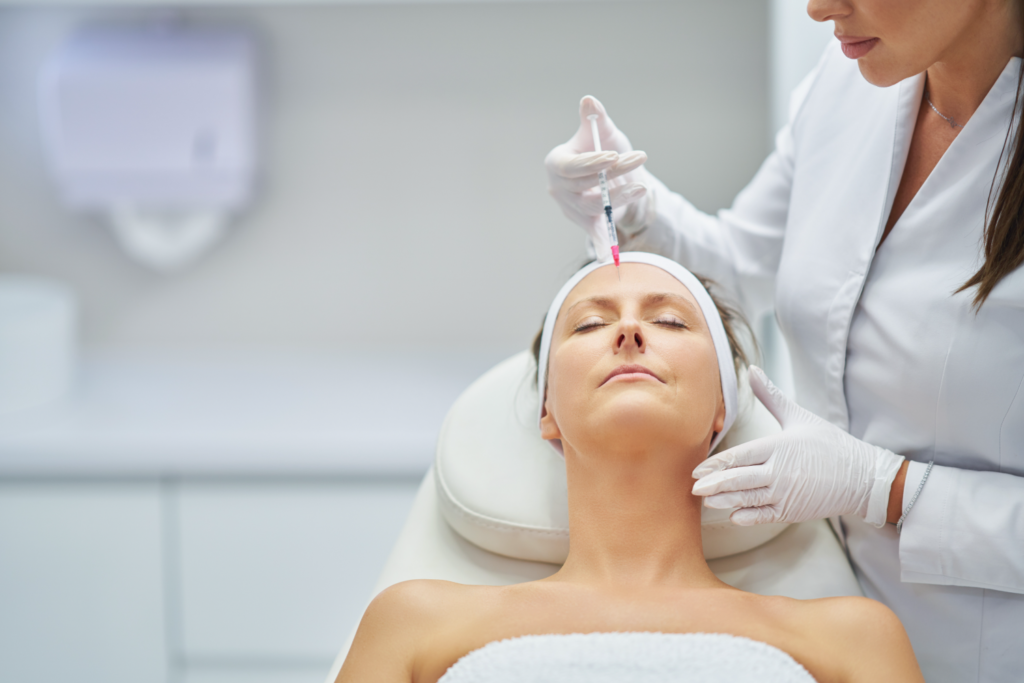
Alternative and Complementary Procedures
When considering Botox for forehead wrinkles, patients often explore other options that might enhance or serve as alternatives to Botox injections. These can range from different types of botulinum toxin formulations to various non-surgical cosmetic treatments aimed at improving skin texture and appearance.
Other Forms of Botulinum Toxin
Besides Botox, which is a common choice for treating forehead lines, there are other formulations of botulinum toxin available. Dysport and Xeomin are two such alternatives that also act to temporarily paralyze muscles and smooth out wrinkles.
They are both derived from the same bacterium as Botox. The dosage and units necessary for effect can differ between these products, which is why a specialist’s consultation is crucial for determining the best option for an individual’s needs.
Additional Cosmetic Treatments
Aside from botulinum toxin-based treatments, individuals may also consider:
- Chemical Peels: These treatments use a chemical solution to remove outer layers of old skin, revealing the newer, less wrinkled skin beneath.
- Laser Treatments: Techniques such as fractional laser therapy can help stimulate collagen production, improving the skin’s firmness and reducing fine lines.
- Dermal Fillers: These injectables can fill in deeper wrinkles and add volume to the skin, with a variety of substances like hyaluronic acid.
Each of these treatments can be tailored to fit a patient’s specific condition and desired outcome. They can also be used in combination with Botox to achieve a more comprehensive rejuvenation effect.
The best approach often integrates a customized plan that addresses unique skin concerns, whether that’s through a single method or a blend of complementary procedures.
Frequently Asked Questions About How Many Units of Botox for Forehead
1. What is The Appropriate Dosage of Botox for a First-Time Forehead Treatment?
For individuals receiving Botox for the first time, practitioners often recommend 10 to 30 units for the forehead area, depending on the desired outcome and muscle strength.
2. What Are The Typical Results of Botox Treatments for Forehead Lines?
Typical results include a smoother appearance of horizontal forehead lines, with effects usually lasting between 3 to 4 months. A practitioner’s skill is crucial for natural-looking results.
3. At What Age is It Recommended to Start Using Botox for Forehead Aesthetics?
There’s no universal age to start Botox treatments; individuals typically begin Botox for cosmetic reasons in their 30s or 40s, but it can vary based on personal aesthetic goals and the onset of visible wrinkles.
4. How Much Botox is Generally Used to Address 11 Lines Specifically?
For ’11’ lines, or glabellar lines, it’s common to administer 10 to 20 units. However, this may vary with individual facial muscle strength and the depth of the lines.
5. What Should One Expect in Terms of Coverage for a 20-Unit Botox Treatment on The Forehead?
A 20-unit Botox treatment on the forehead may cover moderate horizontal lines. The exact coverage highly depends on individual factors such as muscle activity and line severity.
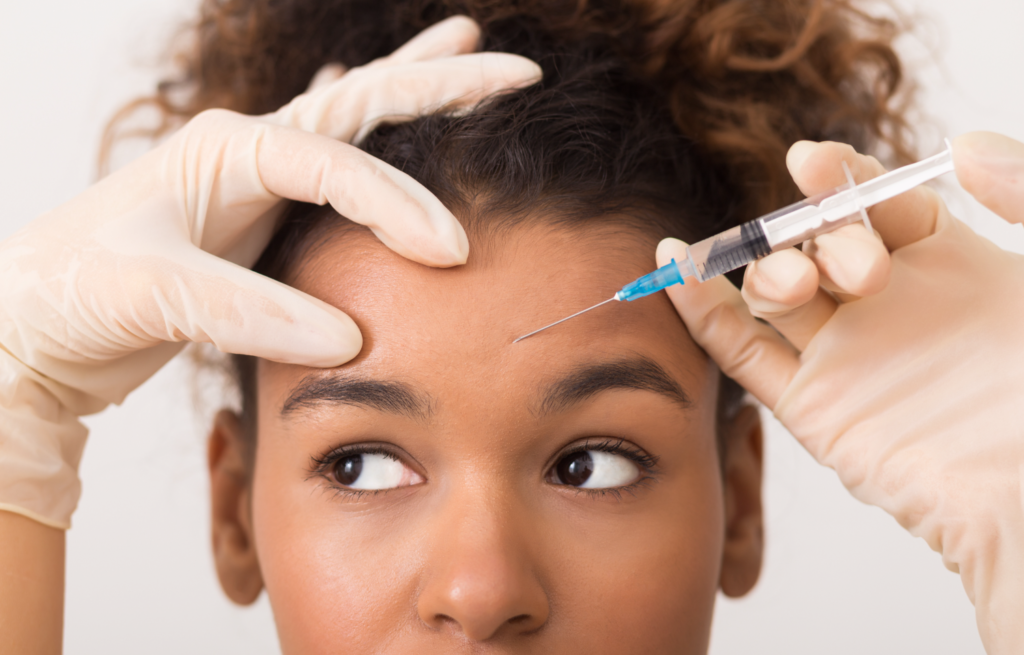
Conclusion and Summary of How Many Units of Botox for Forehead? Guide to Optimal Dosage
When considering how many units of Botox are necessary for treating the forehead, several factors must be carefully evaluated to ensure effective and aesthetically pleasing results. The treatment of forehead lines primarily involves targeting the frontalis muscle, which is responsible for raising the eyebrows and creating horizontal forehead wrinkles. A skilled injector will assess the strength and activity of this muscle, as individuals with stronger facial muscles may require more units of Botox to achieve the desired effect.
Typically, the average units of Botox needed for the forehead range from 10 to 30 units, depending on the individual’s muscle strength, the depth of wrinkles, and desired outcomes. The treatment plan should be fully customized, taking into account specific facial muscles, the extent of facial expressions, and other factors like existing facial wrinkles and the patient’s aesthetic goals.
A comprehensive Botox consultation is crucial, where multiple injection sites across the forehead may be marked to effectively treat fine lines and prevent the formation of new wrinkles. It’s important to avoid administering too much Botox, as this can lead to a lack of facial expressions and a less natural look.
Follow-up appointments are essential to review the outcome and make any necessary adjustments on this cosmetic treatment. Ultimately, many patients find Botox to be a highly effective treatment for maintaining a younger-looking appearance and managing facial wrinkles when administered properly by an experienced Botox provider.
Please note that this article is intended for informational purposes only and should not be construed as medical advice. Before making any changes to your treatments, please consult with your healthcare provider to discuss the appropriateness and safety of such changes.
Ready For Your First-Class Cosmetic Experience in Orange County (OC) California (CA)?
Are you located in one of these Orange County (OC) / Southern California cities?
Aliso Viejo, Anaheim, Brea, Buena Park, Costa Mesa, Coto de Caza, Cypress, Dana Point, Fountain Valley, Fullerton, Garden Grove, Huntington Beach, Irvine, La Habra, La Palma, Laguna Beach, Laguna Hills, Laguna Niguel, Laguna Woods, Ladera Ranch, Lake Forest, Los Alamitos, Mission Viejo, Newport Beach, Orange, Placentia, Rancho Santa Margarita, San Clemente, San Juan Capistrano, Santa Ana, Seal Beach, Stanton, Tustin, Villa Park, Westminster, or Yorba Linda?
Plastic Surgeon Dr. Brandon Richland, MD and our Cosmetic Aesthetics Team are ready to help you look and feel your absolute best.
Elevate your confidence and self esteem levels to unfathomable new heights!
Schedule your in-person consultation in our modern and luxurious offices in either Fountain Valley, CA (Main HQ) or our Newport Beach, CA office.
Do you live outside of Southern California or short on time? For your convenience, Virtual Consultations are also available.
Our warm and engaging Team of carefully selected Aesthetics Professionals will make you feel calm, cool, collected, and right at home throughout your entire consultation and surgery process.
Schedule Your Aesthetics Consultation here, or call us directly at 949-867-4496 today.
About the Author
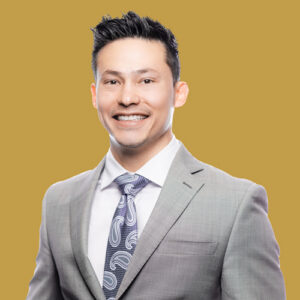
Dr. Brandon Richland, MD is a respected Board Certified Licensed Plastic Surgeon in Orange County / Southern California specializing in cosmetic and reconstructive surgeries.
Driven by his passion for medicine, Dr. Richland obtained his Doctor of Medicine (M.D.) degree from the prestigious program at Saint Louis University (SLU) School of Medicine in 2013. His exceptional skills were recognized when he received the McGraw Hill / Lange Medical Student Academic Achievement Award, and graduated top of his class with Honors. For his undergraduate degree, he attended University of California, Los Angeles (UCLA) and graduated with Honors in 2009.
To further enhance his surgical expertise, Dr. Richland completed his Residency in Plastic Surgery at the University of California, Irvine (UCI) from 2013 to 2019 earning the Academic Achievement Award twice during this period. A total of 14 years in dedicated schooling and medical residency.
Dr. Richland is actively involved with healthcare and medical societies, as a Diplomate of the American Board of Plastic Surgery, a member of the American Society of Plastic Surgeons, American Society of Aesthetic Plastic Surgeons, and the California Society of Plastic Surgeons.
Contact Dr. Richland today by visiting RichlandMD.com, scheduling a cosmetic consultation, or by calling 949-867-4496 directly.
Cover Image Credit: Yacobchuk / 123RF.com (Licensed). Photo Illustration by: Dr. Brandon Richland, MD.










